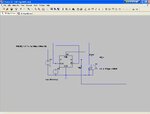Tom2
Full Member level 5

I would like to design a phase shifter circuit which has the ability to shift the phase of the input voltage to 90,180 and 270 degree (different circuit each time). I would like to ask for a clue how to design this or (if there is any component available in the market for this purpose).







